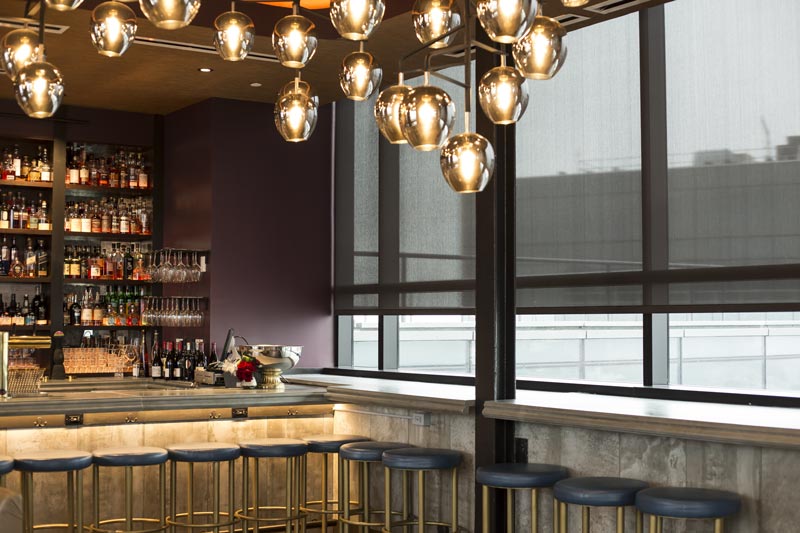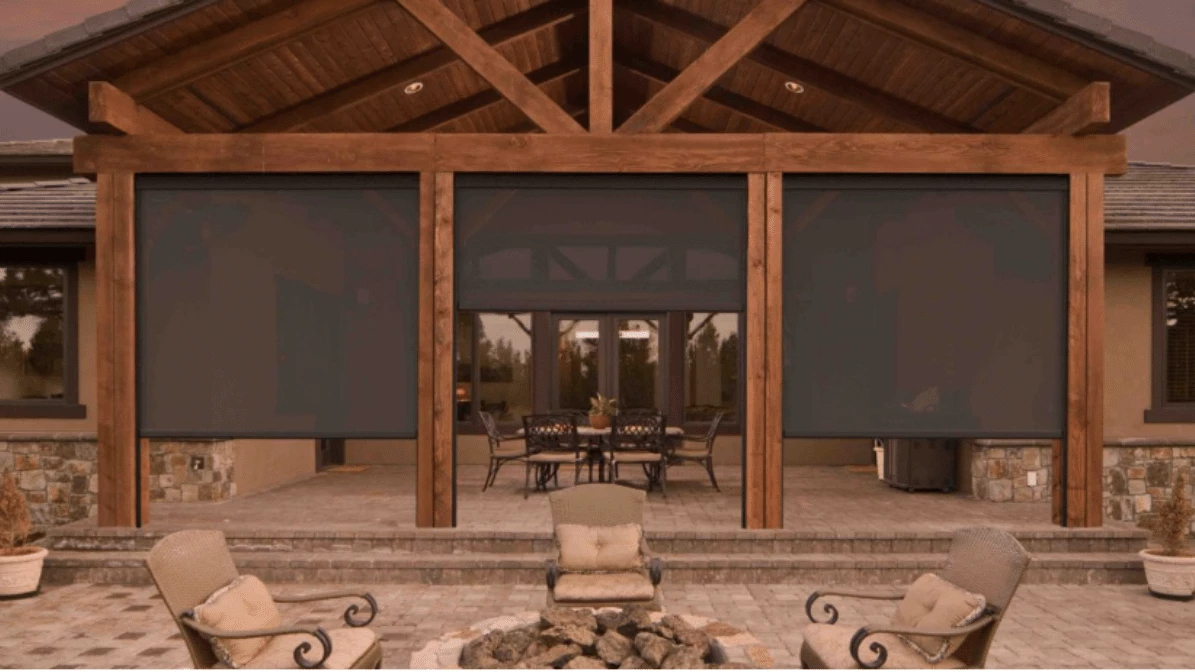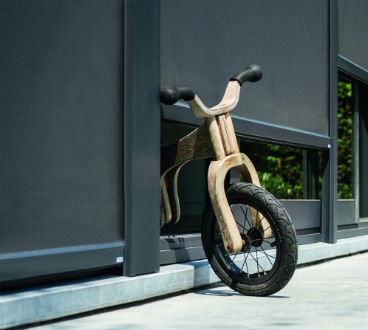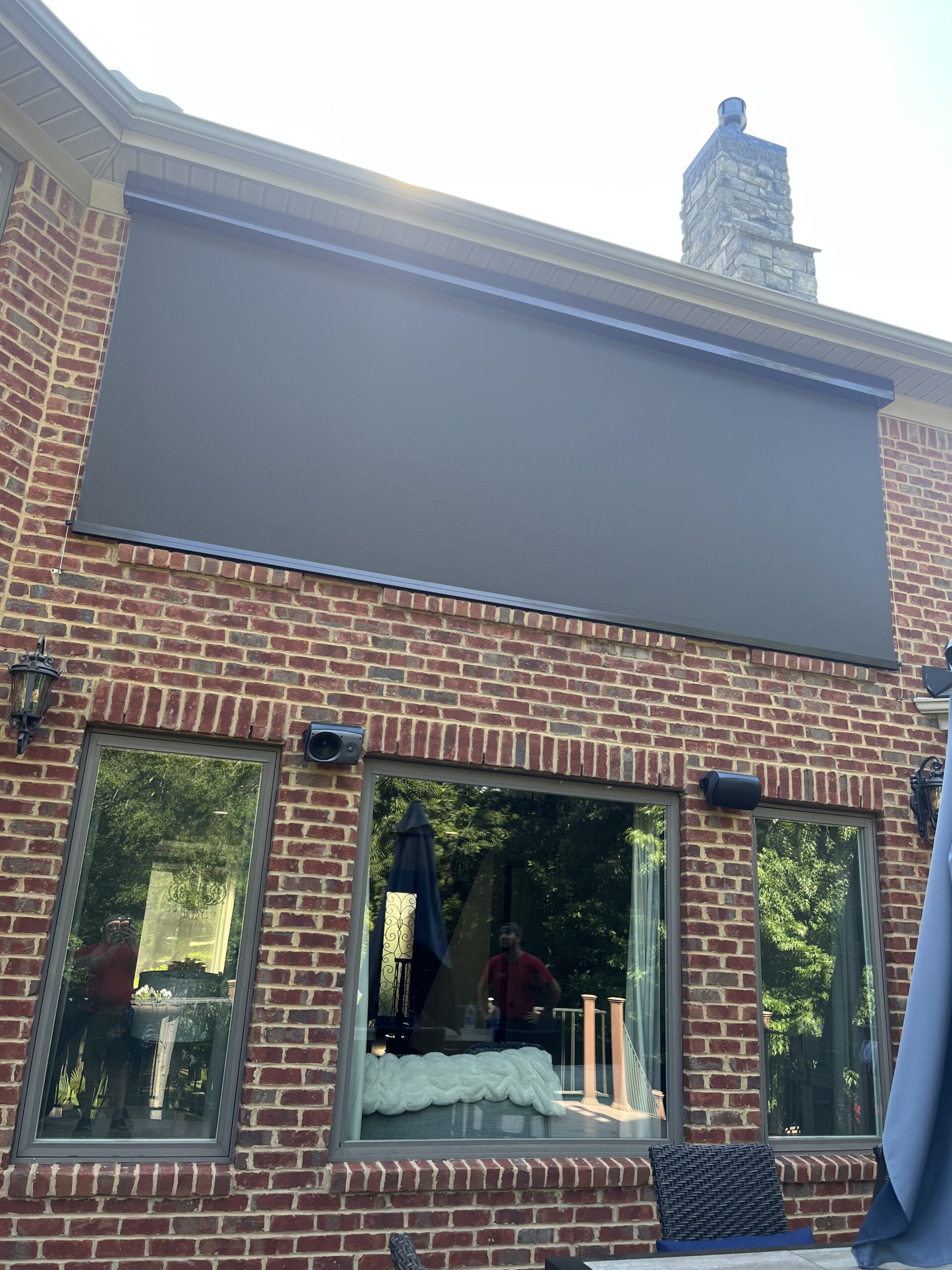One of the main differences between shades, blinds, and shutters is the way that they adjust to let in light. For example, shades can be opened and closed by pulling a cord, while blinds have slats that accommodate up or down. Shutters have hinged panels that can be opened or closed. Another difference is that shades and blinds can be made from various materials, while shutters are usually made from wood or synthetic materials.
Shutters, to begin with, are typically solid coverings with slats that may be opened or closed to regulate the quantity of light entering the room. Another sort of coverage that can be opened and closed to reveal and conceal the window is a shade. Next, the owner can raise or lower the blind to cover the window by using vanes or slats included with blinds. Finally, the owner can change the aperture of the vanes to let in more or less light when the blinds are down. Let’s examine each form of window treatment in more detail.
Shutters
Shutters are frequently referred to as a type of stationary blind that includes a rod. For rotation, the rod is fastened to the shutters’ slats. Plantation shutters are very well-liked and can be produced from natural wood or vinyl. Homeowners can use these shutters to achieve their ideal privacy and light-to-darkness ratios. Plantation shutters are more durable than blinds since they can be constructed of wood and other strong materials. Additionally, they offer superior insulation against the heat or cold throughout seasonal fluctuations.
Shades
Shades are practical, fashionable, and cost-effective solutions. Simple functioning window coverings are an affordable alternative to motorized window coverings for people on a tight budget. If you have more money to invest, it is advised to choose designer blinds that come in a wider variety of styles, constructions, and fabrics. These shades might improve your room’s aesthetic appeal and perhaps highlight the current décor.
Traditional shades might not be ideal for optimal light control; instead, you need blinds. In recent years, bottom-up or top-down shades have grown in popularity. Top-down shades let you lower the shade’s top to let in a small amount of light gradually or a large amount of light all at once. Furthermore, thanks to these functions, you may easily retain the level of privacy you desire.
Blinds
Window coverings at house Blinds can be made in various forms and styles, but what best sets them apart are their vertical and horizontal slats. Some also include sheer fabric covering their structure to increase privacy while a blind is open. Genuine wood, bamboo, vinyl, aluminum, and other materials can be used to make blinds.
Due to the louvers, blinds are occasionally compared to shutters. However, shutters are distinct from blinds, which can be easily distinguished by thinking of shades as soft window treatments and blinds as complex window treatments. Additionally, whereas shades are made to operate on a continuous roll to cover a wide window area, blinds can be dragged across a window and stacked to the sides.
When it comes to selecting any of these window coverings, there is no right or wrong answer. The option you make will ultimately depend on your preferences and the size and design of your windows and room.
Price of Shutter vs. Shades vs. Blinds
The price tag is one of the primary considerations for many people when choosing window treatments since it will vary depending on the style and material you choose. As a result, faux wood shutters are usually less expensive than real wood shutters because they are not made from solid wood but rather from a composite material.
Additionally, the size of your window will also affect the overall cost. The larger the window, the more expensive the treatment will be. Finally, bespoke therapies will be more costly than off-the-shelf treatments because they are made to your specifications.
When it comes to shades, blinds are typically less expensive than shutters. This is primarily because they are made from less costly materials, such as vinyl and aluminum, which makes them simpler to produce. Additionally, shades can be delivered on a larger scale than shutters, making them more affordable for manufacturers.
However, custom-made shades will be more costly than off-the-shelf treatments because they are made to your specifications. The cost of custom shades will also be affected by the size of your window and the number of windows you have.
Plantation shutters are usually the most expensive window treatment option. This is primarily because plantation shutters are made from solid wood, which is more costly than other materials. Additionally, plantation shutters are usually custom-made, increasing the overall cost.
The price of your window treatment will ultimately depend on your window’s style, material, and size. Plantation shutters are typically the most expensive option, followed by shades and blinds. Bespoke treatments will also be more costly than off-the-shelf treatments.
Installation:
Regarding installation, plantation shutters are typically the most difficult to install because they are made from solid wood and must be custom-fitted to your window. As a result, plantation shutters should only be installed by a professional.
On the other hand, shades and blinds are relatively easy to install. You can install most shades and blinds by following the instructions that come with the product and can install most shades and blinds. However, if you are not confident in your ability to install the shades or blinds, you can always hire a professional.
Finally, installing plantation shutters will be more expensive than installing shades or blinds because they are made from solid wood and must be custom-fitted to your window. As a result, plantation shutters should only be installed by a professional.
Maintenance:
Regarding maintenance, plantation shutters are the most low-maintenance option because they are made from solid wood and do not require much upkeep. However, plantation shutters can be damaged by water and sunlight, so they should be cleaned and dusted regularly.
Conclusion:
The overall cost of your window treatment will depend on your window’s style, material, and size. Plantation shutters are typically the most expensive option, followed by shades and blinds. Custom-made treatments will also be more costly than off-the-shelf treatments. Regarding installation, plantation shutters are typically the most difficult to install because they are made from solid wood and must be custom-fitted to your window. As a result, plantation shutters should only be installed by a professional. Finally, when it comes to maintenance, plantation shutters are the most low-maintenance option because they are made from solid wood and do not require much upkeep. However, plantation shutters can be damaged by water and sunlight, so they should be cleaned and dusted regularly.
The largest range of high-quality, custom window treatments is available at Carolina Exterior Shade, whether you want blinds, shades, or shutters. To schedule your free in-home consultation, contact us right away. We’ll visit your house immediately, measure your windows, and provide you with an estimate there and then.




